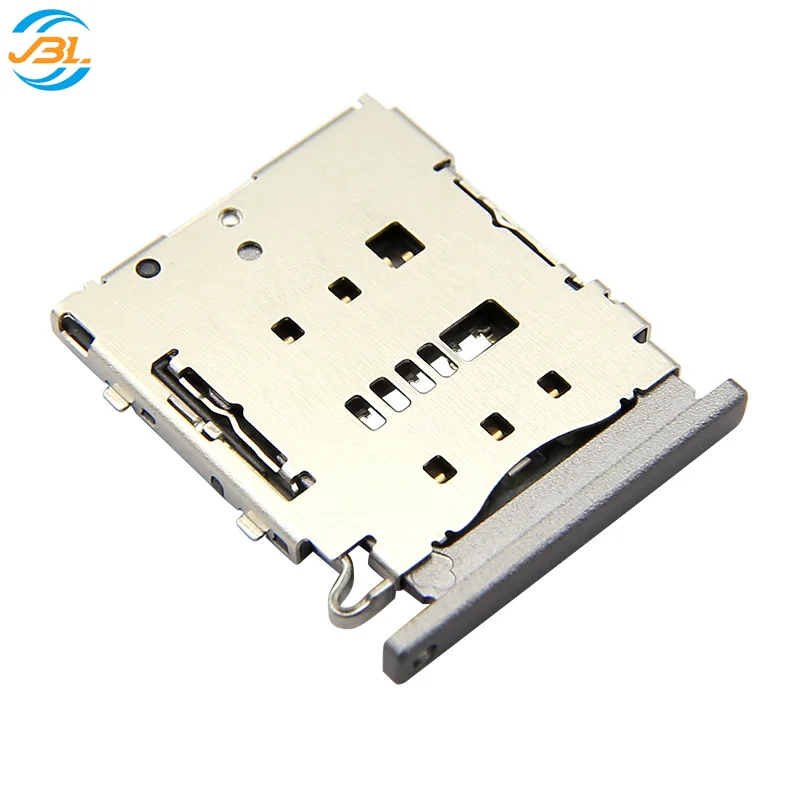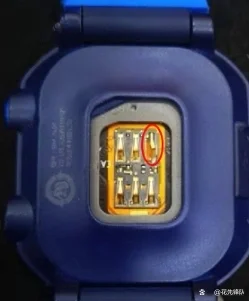I. Common Fault Types and Causes
Poor Contact
Symptoms: The device fails to recognize the SIM card, or the signal is intermittent.
Causes: Prolonged exposure to humid or dusty environments leads to oxidation of metal contacts or dust accumulation, reducing conductivity. In automotive scenarios, high temperature and humidity accelerate oxidation, while smartwatches may experience faults due to sweat erosion.
Physical Damage
Symptoms: Deformed card slot, broken contacts, or damaged SIM ejector pin holes.
Causes: Rough insertion or removal of the SIM card, using non-original ejector tools, or improper handling. For example, excessive force may deform the internal spring plate, affecting SIM card fixation.
Solder Joint Failure
Symptoms: The device completely fails to read the SIM card, with no visible damage to the card slot.
Causes: Solder joints on the circuit board may loosen or detach due to prolonged vibration (e.g., in automotive devices), aging, or defects in low-temperature soldering processes.

II. Repair Procedures and Tool Selection
Diagnosis: Accurate Fault Localization
Tools Required: Multimeter, magnifying glass, tweezers.
Steps:
Conductivity Test: Use the multimeter's continuity mode to check the connectivity between the SIM card contacts and the corresponding solder points on the motherboard. If the resistance of a path is abnormal (e.g., exceeding 1Ω), it indicates poor contact or a broken circuit.
Structural Inspection: Use a magnifying glass to examine the internal structure of the card slot, checking for deformed spring plates or misaligned contacts.
Cleaning and Maintenance: Restoring Contact Functionality
Applicable Scenarios: Poor contact caused by mild oxidation or dust accumulation.

Steps:
Precautions: Avoid corrosive cleaners (e.g., WD-40) to prevent damage to the plastic card slot.
Cleaning Contacts: Dip a cotton swab in anhydrous alcohol (concentration ≥95%) and gently wipe the metal contacts of the SIM card slot to remove oxidation and dirt.
Drying: Use a blow dryer on a low-temperature setting (below 50°C) to dry the card slot, preventing short circuits caused by residual alcohol.
Component Replacement: Professional Hardware Repair
Applicable Scenarios: Severe deformation of the card slot, broken contacts, or detached solder joints.
Tools and Materials: Adjustable-temperature hot air gun, replacement SIM card connector (e.g., JST SH series), solder wire, flux.
Steps:
Risk Control: Limit high-temperature operations to 5 seconds to avoid peeling of the PCB copper foil.
Removing the Old Connector: Set the hot air gun to 240-260°C, evenly heat the solder joints of the connector, and use tweezers to remove the old part once the solder melts.
Soldering the New Connector: Apply flux to the motherboard pads, align the pins of the new connector, and solder each point with a soldering iron, ensuring no cold joints or bridging.
Functional Verification: Ensuring Repair Reliability
Testing Methods:
Basic Test: Insert the SIM card and check if the device recognizes the carrier network.
Stress Test: Repeatedly insert and remove the SIM card 10 times to verify the structural stability of the card slot; test signal continuity while driving (simulating vibration).
III. Preventive Maintenance Strategies: Extending Connector Lifespan
Regular Cleaning and Inspection
Recommended Frequency: Every 3 months for automotive devices, every 6 months for smartwatches.
Key Steps: Use compressed air to remove dust from the card slot and wipe the contacts with alcohol pads.
Proper Handling Practices
Insertion/Removal Guidelines: Always use the original ejector tool, insert/remove the SIM card vertically, and avoid tilting to prevent spring plate deformation.
Environmental Management: Avoid replacing SIM cards in dusty or highly humid environments; consider adding dust covers for automotive devices.
Hardware Design Upgrades
Selection Recommendations: Prioritize IP67-rated waterproof connectors (e.g., TE Connectivity products for automotive use) or gold-plated contact models (e.g., ultra-thin card slots for smartwatches) to enhance durability.
Technology Trends: eSIM (embedded SIM) can reduce the need for physical insertion/removal and may gradually replace traditional solutions.